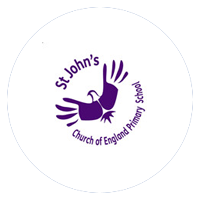St John’s Primary school is a 2 form entry school based in Canterbury, Kent. The School opened in September 2012 as the result of the amalgamation of two schools. The school has a high intake of children with special educational needs (SEN), English as an additional language (EAL) and children from service families. The School’s vision statement is:
‘Challenging ourselves and supporting others to be outstanding together.’
Ruth Baker is the ICT subject leader at the School. Ruth is a fully trained teacher but works as a Higher Level Teaching Assistant (HLTA). She was previously acted as an ICT technician but now they have taken on additional technical support it has given her more time for her to have a greater curriculum focus.
Ruth, the Head Teacher and Head of Curriculum attended the 2013 BETT awards to investigate some of the options available. They went with an open mind and without any pre-conceived ideas, at that stage they were not even looking specifically at tablet pcs. Ruth and her colleagues had a demonstration of LearnPad at the BETT exhibition and were immediately impressed.
Given the school is new, there has been building work, movement between classes and some lessons have been taught in smaller spaces than they would ideally like. This led Ruth and her colleagues to conclude that a tablet solution would be right for them given that the devices take up little space and are highly portable.
For St John’s there were few other tablets in consideration. LearnPad already ticked their requirement for being portable. When they investigated prices it was within their budget. They also found the Dashboard feature appealing as a classroom management tool. In the words of Ruth, ‘we were convinced straight away.’
The decision was made to purchase 60 Quarto LearnPad devices (9.7”) as well as 2 trolleys to store them in and charge them. They opted for the premium package, which includes a case, keyboard, headphones and stylus for each device. The purchasing process was simple and Ruth recalls that they were ‘kept in the loop.’
Ruth opted to roll the devices out across the entire school in one go. One trolley of 30 devices was allocated for use across the lower school and the other for use with upper school children. Ruth reports that setting up of the devices was straight forward, ‘the QR Codes made it easy.’ Ruth has spoken to the technical team for help and because of the small, friendly nature of the company she is on first name terms with them. She comments that ‘the support line is fantastic.’ Ruth feels that you do not feel embarrassed about asking the team questions, no matter how ‘stupid’ they may seem!
Once the devices were enrolled to the School’s organisation, they were able to use the Dashboard tool to set up groups of devices. This makes managing the devices easier. The school have set up groups of devices associated with locations throughout the School. Therefore they can use the Dashboard tool to change content and monitor only the required devices, filtering out the devices that are being used elsewhere in the School.
The school is currently in the early stages of using LearnPad. At the moment they have taken the default Primary Profile and modified it to meet the needs of their school by adding additional apps and websites into the categories for the different subjects.
For example, within the Literacy and Language category they have also included some phonics apps (found in the LearnPad store) to support the teaching of the synthetic phonics programme throughout the school. Ruth found the process of modifying the profile ‘easy to do.’
Children in Year 1 are also making good use of the Forming Letters activity to help them improve standards in handwriting. This fits with one of the aims in the School Development Plan for improving boy’s writing. At the upper end of the School, the devices are being used predominantly as a tool to carry out independent research during this initial phase. The process of integrating LearnPad into the curriculum does not have to go at lightning speed; it is up to the school to make adjustments at a pace they are happy with. Ruth acknowledges they are at an early stage of using the product but envisages it will change the way they teach moving forward.
Ruth has not had any formal training in using LearnPad but says it is ‘easy to find out how to use’. She has made use of the support guides available on the LearnPad website, which she rates as ‘very good.’ The dedication of the LearnPad team is reflected by the ‘excellent’ support she has received when asking for assistance. Ruth recalls emailing a support issue on a Sunday evening, not expecting a reply until at least the following day. However, a technical advisor was online outside of normal working hours and as a result the issue was resolved just half an hour later.
Dashboard is one of the features Ruth encourages teachers to use at her school. It allows teachers to send groups of children to work on the Learn Pads outside of the classroom but to keep an eye on what they are doing remotely.
Through observing the children using the LearnPad devices Ruth notes how they are effective in motivating the children. She believes it is ‘what our kids need.’ Ruth feels that LearnPad helps the children to be more focused on the task at hand the children only having access to a more restricted selection of ICT resources on the devices.
On account of the quality advice and support received by the School, the process of implementing LearnPad has been smooth. The ability to customise LearnPad easily means that it meets the demands of the School.
The versatility of the product means that the approach to teaching and learning does not have to change extensively over-night, this is particularly an advantage for teachers who may feel apprehensive about integrating technology.


